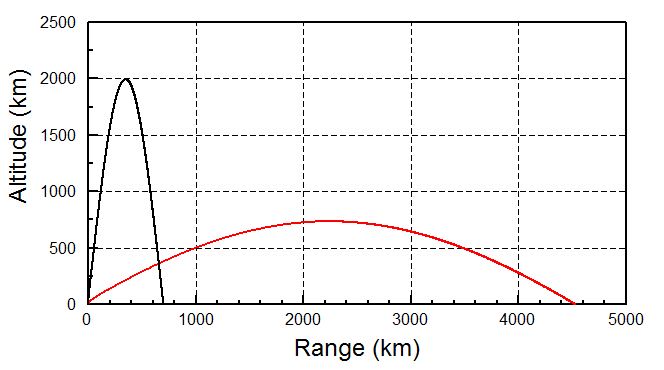DAVID WRIGHT, CO-DIRECTOR AND SENIOR SCIENTIST | MAY 13, 2017, 9:09 PM EDT
North Korea launched a missile in a test early in the morning of May 14, North Korean time. If the information that has been reported about the test are correct, the missile has considerably longer range than its current missiles.
Reports from Japan say that the missile fell into the Sea of Japan after traveling about 700 km (430 miles), after flying for about 30 minutes.
A missile with a range of 1,000 km (620 miles), such as the extended-range Scud, or Scud-ER, would only have a flight time of about 12 minutes if flown on a slightly lofted trajectory that traveled 700 km.
A 30-minute flight time instead require a missile that was highly lofted, reaching an apogee of about 2,000 km (1,240 miles) while splashing down at a range of 700 km. If that same missile was flown on a standard trajectory, it would have a maximum range of about 4,500 km (2,800 km).
New press reports are in fact giving a 2,000 km apogee for the test.

Fig. 1 The black curve is the lofted trajectory flown on the test. The red curve is the same missile flown on a normal (MET) trajectory.
This range is considerably longer than the estimated range of the Musudan missile, which showed a range of about 3,000 km in a test last year. Guam is 3,400 km from North Korea. Reaching the US West Coast would require a missile with a range of more than 8,000 km. Hawaii is roughly 7,000 km from North Korea.